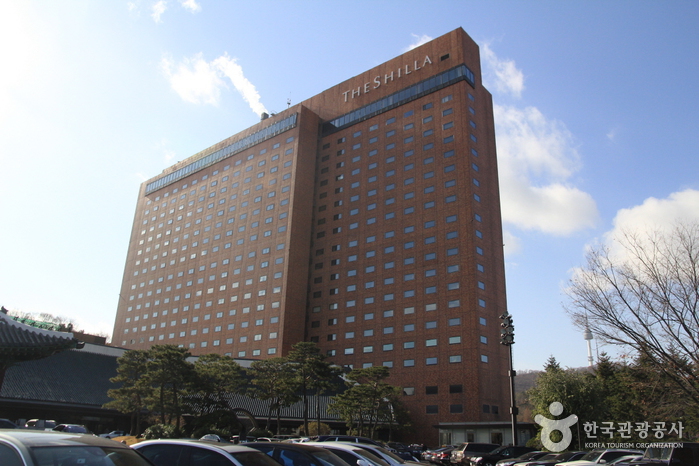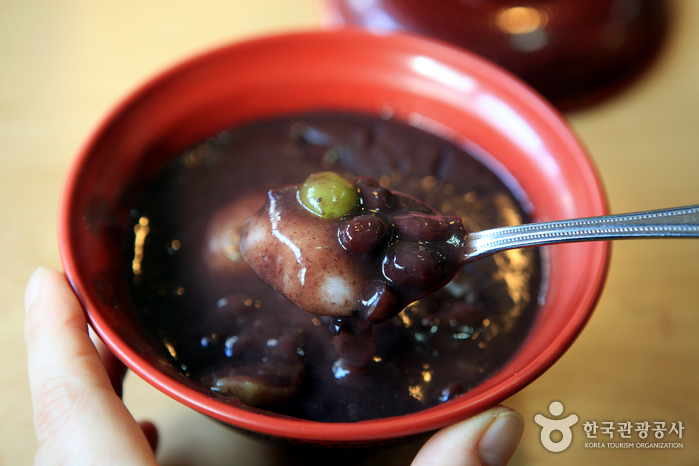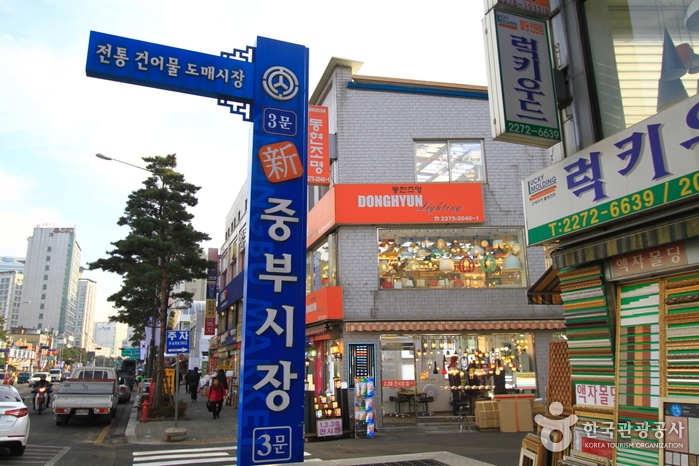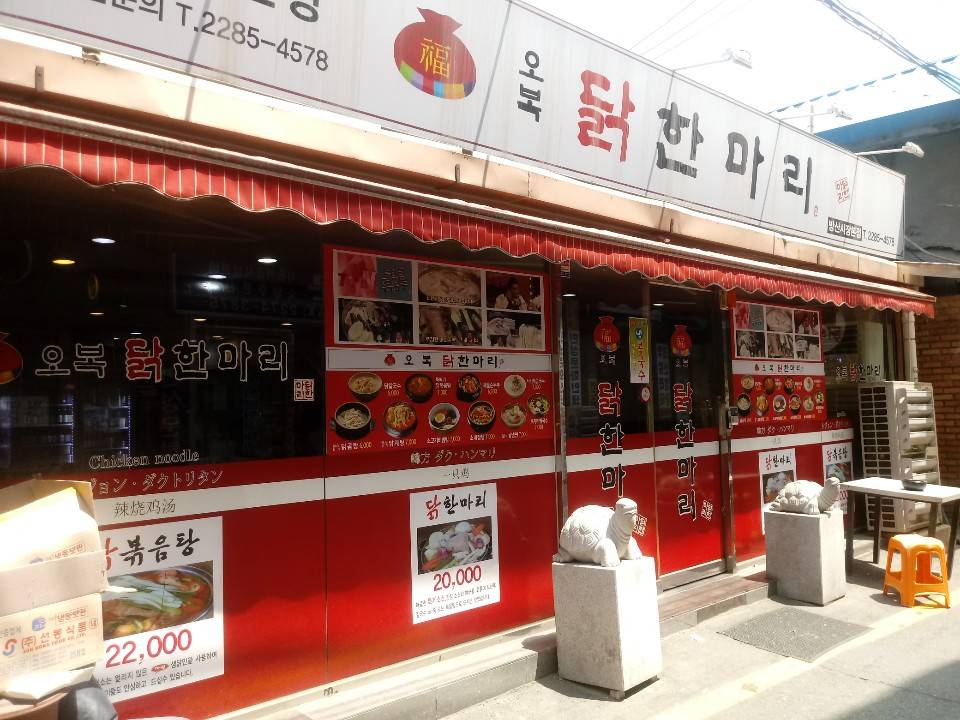Sanctuaire Jongmyo [Patrimoine mondial de l'UNESCO] (종묘)
8.5Km 2023-08-30
157, Jong-ro, Jongno-gu, Seoul-si
+82-2-765-0195
Le sanctuaire royal de Jongmyo est l’endroit de vénération des rois de la dynastie Joseon. Il a été construit lorsque le premier roi de la dynastie Joseon, Lee Seong-Gye (1335-1408) a fondé cette fameuse dynastie.
Le sanctuaire royal de Jongmyo est inscrit au patrimoine culturel mondial de l'Unesco grâce à ses traditions et ses coutumes tels que les services funéraires et la musique traditionnelle qui y sont très bien conservés.
Vous trouverez un chemin qui bifurque en trois routes en face de la porte principale du sanctuaire royal de Jongmyo. Le passage de la route du milieu qui est légèrement surélevé était autrefois réservé pour les défunts et leurs esprits, la porte de l’est pour le roi et la porte ouest pour le prince. Le passage du milieu est relié à Jeongjeon, et les routes de chaque côté sont connectées quant à elles à la salle de préparation du service mémorial. Après avoir préparé avec beaucoup de soin son esprit et son corps, le roi et le prince se rendaient régulièrement à Jeonsacheong. Jeonsacheong est le lieu où étaient préparés les aliments pour la cérémonie funéraire. Avec la cour au centre, les bâtiments de Jeonsacheong sont de forme carrés. Le bâtiment principal, Jeongjeon, est le lieu où les tablettes mortuaires des rois étaient gardées et où étaient tenus les services funéraires.
Ce lieu a ainsi su préserver ses traditions jusqu'à aujourd'huin, malgré le fait que les reliques des rois successifs aient été originellement passées en Chine. Jeongjeon est constitué de 19 chambres où chacune d’elle sert à la vénération des rois.
La musique des services funéraires du sanctuaire royal de Jongmyo est crée par des instruments, des chants et des danses créés il y a plus de 500 ans. La mélodie a été transmise telle qu’elle depuis toute cette période. Cette cérémonie est la cérémonie complète et traditionnelle la plus vieille du monde et se tient tout les premiers dimanches du mois de mai, et ce chaque année. C’est une grande opportunité pour les visiteurs d'apprécier la grandeur d’une telle cérémonie traditionnelle. Le sanctuaire accueille de nombreux événéments durant le mois de mai, ce qui en fait la meilleure période pour le visiter.
The Shilla Seoul (신라호텔(서울))
8.5Km 2021-05-31
249, Dongho-ro, Jung-gu, Seoul
+82-2-2230-3311
The Shilla Seoul is a luxury hotel with an outdoor sculpture garden and Guerlain Spa. Other facilities include a fitness center, sauna, swimming pool, business center, restaurants, and more. The hotel also offers guests a free shuttle bus to Myeongdong and Dongdaemun shopping centers.
Seoureseo Duljjaero Jalhaneunjip (The Second Best in Seoul) (서울서둘째로잘하는집)
8.5Km 2020-06-16
122-1, Samcheong-ro, Jongno-gu, Seoul
+82-2-734-5302
The delicious, sweet, red-bean soup called “Danpatjuk” in Korean and served at “The Second Best in Seoul” has been an all-time favorite since it opened in 1976. Not only the exterior, but the interior as well, is very simple and modest, similar to a teahouse in the '70s. This does not keep people from coming back because the unforgettable taste of the sweet red-bean soup makes them return again and again.
“The Second Best in Seoul” was originally opened as a teahouse for traditional Korean medicinal tea; sweet red-bean soup being one of the main specialties on their menu list. But, nowadays, sweet red-bean soup has become the most popular menu item. Sweet red-bean soup can be enjoyed as a light meal because it fills you up quickly. In addition, the chestnuts, gingko nuts, red beans, and glutinous rice cake that are in the thick red-bean soup provide good nutrition.
TIP: The name is very special, right? “The Second Best in Seoul” was named by their modest mind of making food with utmost sincerity.
Uraeok (우래옥)
8.5Km 2021-03-24
62-29, Changgyeonggung-ro, Jung-gu, Seoul
+82-2-2265-0151
This 2020 Michelin Guide restaurant specializes in Pyongyang-style naengmyeon (Korean cold noodle). The best menu at this restaurant is pyeongyang cold buckwheat noodles. This Korean dishes restaurant is located in Jung-gu, Seoul.
Onmaeul (온마을)
8.5Km 2021-03-22
127, Samcheong-ro, Jongno-gu, Seoul
+82-2-738-4231
A place that sells dishes made with beans, which are good for the health. This restaurant's signature menu is pureed soybean stew. This Korean dishes restaurant is located in Jongno-gu, Seoul.
Jongmyodaeje (Rite ancestral royal de Joseon) (종묘대제)
8.5Km 2022-04-01
Jongmyo, Jongno-gu, Seoul
+82-2-2270-1242
Jongmyodaeje, organisé par l'Administration de l'héritage culturel
et la Fondation de l'héritage culturel coréen et dirigé
par la Comité d'accomplissement de Jongmyodaeje se tient tous les ans
au mois de mai. En tant que 56ème trésor culturel et intangible
classé, Jongmyodaeje a lieu à Jongmyo, patrimoine culturel du
monde. Il s'agit d'une occasion rare de voir le trésor culturel tangible
et le trésor culturel intangible s'unir en même temps. Le jour
du rite, vous pouvez le voir gratuitement et sans réservation à
l'avance.
Jongmyo Daeje vit le jour en tant que rîtuel royal anecestral
afin d’honorer les rois et reines de la Dynastie Joseon. Durant cette période
de Joseon, le rituel eut lieu cinq fois dans l’année (au printemps,
en été, en automne, en hiver et en décembre) avant d’être
aboli par une loi pendant la colonisation japonaise. En 1969, Jongmyo Daeje
fut rétabli et se tient depuis tous les mois de mai.
Marché de Jungbu à Séoul (서울 중부시장)
8.6Km 2021-08-12
35, Eulji-ro 36-gil, Jung-gu, Seoul-si
+82-2-2267-5617
Le marché de Jungbu propose un large assortiment d’aliments séchés tels que des algues, des anchois, des corvinas jaunes, des calamars, des lieus jaunes et des fillets de poissons-bourses à des prix bon marché. Comme Jungbu est un marché de vente au détail et au gros, les prix y sont 20 à 30% plus bas que les marchés ordinaires. Les boutiques ont tendance à vendre seulement 1 ou 2 types de fruits de mer, ce que fait qu’on peut y trouver des produits séchés à des prix raisonnables. Les fillets de poissons-bourses, les algues et les lieus jaunes séchés sont appréciés des clients, et on y trouve depuis peu de nombreuses sortes d’aliments transformés. On y vient également souvent pour y acheter la nourriture que l’on disposera sur la table lors des cérémonies du culte des ancêtres, et on peut aussi y trouver d’autres produits courants pour moins cher qu’ailleurs. Le marché ouvre à 4h du matin et la plupart des boutiques ferment vers 17h. A 18h, le marché devient si calme et inactif qu’il est recommandé d’y aller avant 15h si vous souhaitez y faire des courses.
Darakjeong (다락정)
8.6Km 2021-03-26
131-1, Samcheong-ro, Jongno-gu, Seoul
+82-2-725-1697
Darakjeong has been popular for a long time because of the simple taste of its traditional Mandu (Korean stuffed dumpling). Since its opening in 1991, tasty soup and scrumptious Mandu have been served. A fist-sized Mandu is fully packed with seasoned meat, bean-curd, and various vegetables. Its thick dough makes it chewy and delightful. For one person, “Manduguk”(boiled dumpling soup) is a good choice. The delicious and nourishing taste of Mandu goes well with the sweet, spicy, and fresh taste of the soup. Manduguk is served in a brass bowl which keeps the food warm while eating. For a large-size group, “Mandujeongol” cooked with various vegetables in a casserole is recommended. There are two types of Mandujeongol that have different tastes. The main characteristic of “Kimchi Mandujeongol” is its spicy flavor, which reminds people of the refreshing taste of Kimchi soup, and “Tojang Mandujeongol” expounds on the savory taste of bean-paste soup. Tojang means folk soybean-paste. “Nokdujeon”(a Korean pan-fried dish with green mung bean) is another famous dish at Darakjeong, which is pan-fried with a very light seasoning to emphasize the original taste of Nokdu (green mung bean). Salted oysters with hot pepper are served with Nokdujeon instead of soy sauce, which is a perfect match.
Obok Dakhanmari - Euljiro Branch(오복닭한마리 을지로)
8.6Km 2021-04-15
32-3, Eulji-ro, 27-gil, Jung-gu, Seoul
+82-2-2285-4578
This is a Korean cuisine located in Cheonggyecheon Stream, Seoul. It sells boiled chicken in clear broth. The best menu at this restaurant is noodle soup with chicken.
Inwoohouse [Korea Quality] / 인우하우스 [한국관광 품질인증]
8.6Km 2023-04-13
9, Gyedong 6-gil, Jongno-gu, Seoul
02-742-1115
Run by a couple hailing from Bukchon, Inwoo House is located in an alleyway in Gye-dong, Jongno-gu, which is part of Bukchon that is well-known for old hanok houses. Inwoo House, meaning 'the house of Inwoo,' is inhabited by the owner couple and eight-year-old son Inwoo and his younger brother Yeonwoo. The couple, who have always lived in Bukchon, moved to Inwoo House in 2010; their parents run another guesthouse -- Yeonwoo House -- in Gahoe-dong, which isn’t far from Inwoo House. These two hanok guesthouses seek to provide guests with an opportunity to experience the true aspect of traditional Korean house amid the natural environment. Inwoo House, which has the typical style of hanok in the area, features a cozy yard, a toenmaru (narrow wooden porch running along the outside of the building), and several charming decorative items. It has three rooms – Tokki-bang and Haejanggeum-bang situated in Sarangchae (a detached building) and Nori-bang, which is a communal space. Due to its quiet location, guests can enjoy relaxation with a serene atmosphere in their rooms, which are decorated with calligraphic works and furniture inlaid with mother-of-pearl in a simple way. Each room is equipped with a bathroom. The guesthouse offers breakfast such as toast or tteokguk (rice cake soup). Inwoo House is an ideal place to stay for guests with children as the owner couple have children with whom children can play in the alley, yard, or toenmaru with an interesting hanok environment. The guesthouse also provides various traditional activities including traditional Korean clothes experience, traditional Hanji (Korean paper) craft experience, traditional knot bracelet making, and fan decorating, which are popular among foreign tourists and children. It is adjacent to restaurants, coffee shops, convenience store, and other tourist attractions including Gyeongbokgung Palace, Changdeokgung Palace, Insa-dong, and Samcheong-dong.
![Sanctuaire Jongmyo [Patrimoine mondial de l'UNESCO] (종묘)](http://tong.visitkorea.or.kr/cms/resource/41/2678541_image2_1.jpg)






![Inwoohouse [Korea Quality] / 인우하우스 [한국관광 품질인증]](http://tong.visitkorea.or.kr/cms/resource/64/2633664_image2_1.jpg)
 Français
Français
 한국어
한국어 English
English 日本語
日本語 中文(简体)
中文(简体) Deutsch
Deutsch Español
Español Русский
Русский